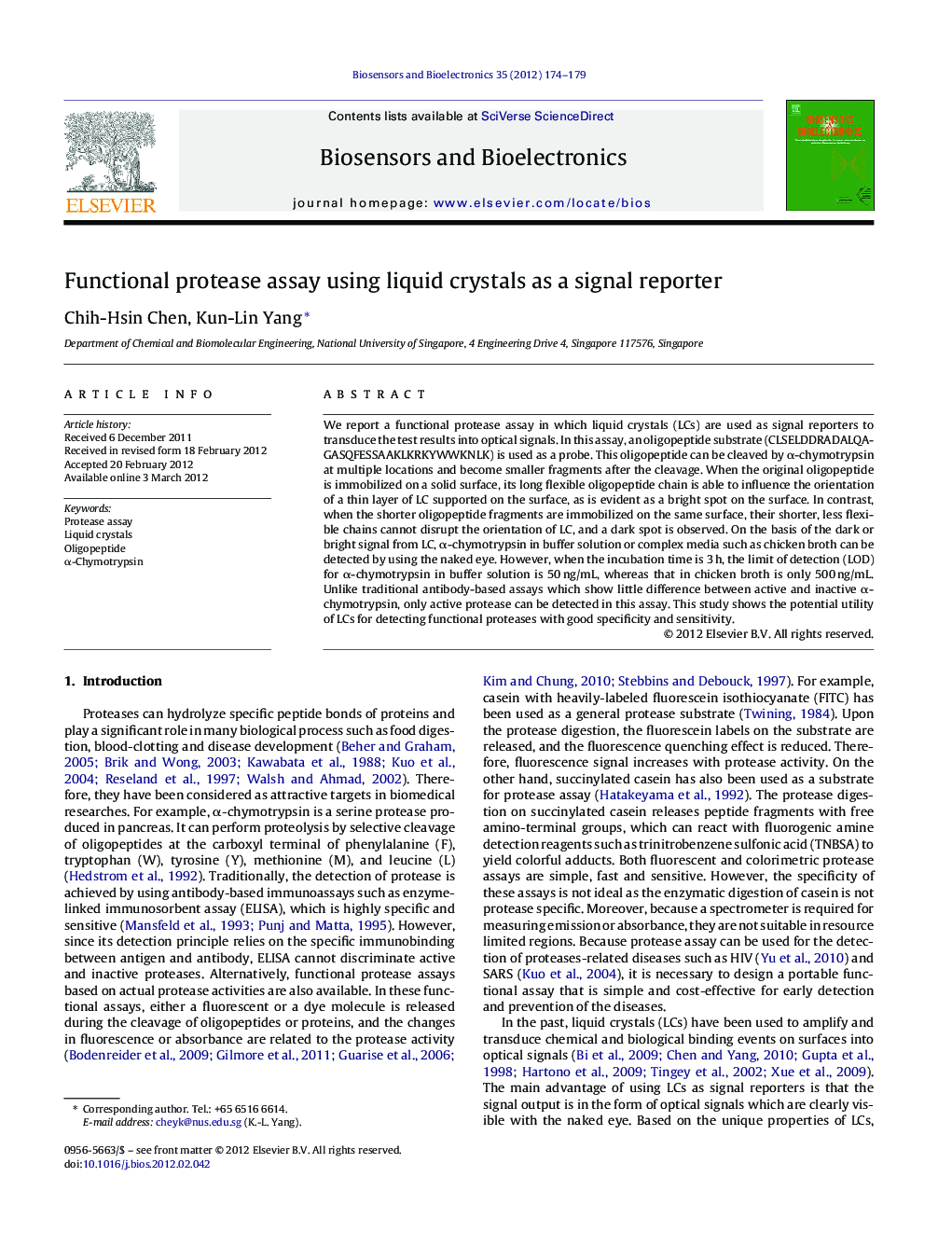| Article ID | Journal | Published Year | Pages | File Type |
|---|---|---|---|---|
| 867375 | Biosensors and Bioelectronics | 2012 | 6 Pages |
We report a functional protease assay in which liquid crystals (LCs) are used as signal reporters to transduce the test results into optical signals. In this assay, an oligopeptide substrate (CLSELDDRADALQAGASQFESSAAKLKRKYWWKNLK) is used as a probe. This oligopeptide can be cleaved by α-chymotrypsin at multiple locations and become smaller fragments after the cleavage. When the original oligopeptide is immobilized on a solid surface, its long flexible oligopeptide chain is able to influence the orientation of a thin layer of LC supported on the surface, as is evident as a bright spot on the surface. In contrast, when the shorter oligopeptide fragments are immobilized on the same surface, their shorter, less flexible chains cannot disrupt the orientation of LC, and a dark spot is observed. On the basis of the dark or bright signal from LC, α-chymotrypsin in buffer solution or complex media such as chicken broth can be detected by using the naked eye. However, when the incubation time is 3 h, the limit of detection (LOD) for α-chymotrypsin in buffer solution is 50 ng/mL, whereas that in chicken broth is only 500 ng/mL. Unlike traditional antibody-based assays which show little difference between active and inactive α-chymotrypsin, only active protease can be detected in this assay. This study shows the potential utility of LCs for detecting functional proteases with good specificity and sensitivity.
► We report a functional protease assay using liquid crystals as a signal reporter. ► The results of this protease assay can be observed by naked eye. ► Active and inactive proteases can be differentiated by using this protease assay. ► Both α-chymotrypsin and trypsin can be detected at 5 ng/mL.
